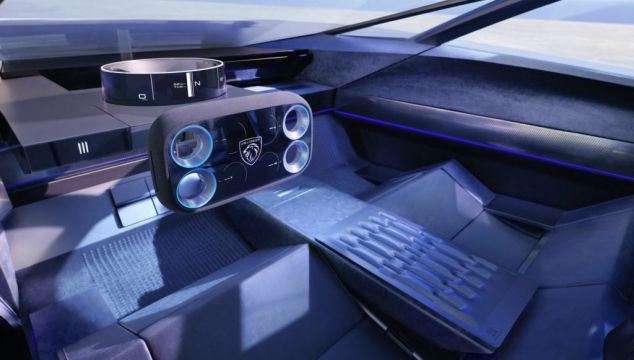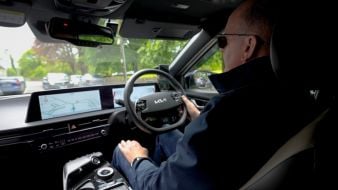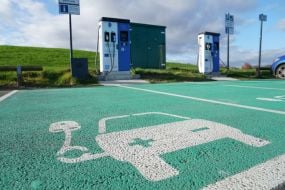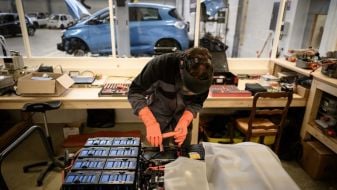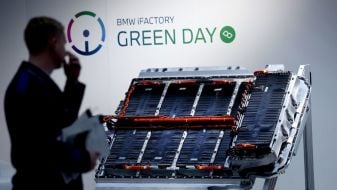Remember when your parents brought home their first new car, and you got really excited because it had electric windows and a radio you could take the front off, and stick it in your pocket (to stop it getting stolen, rather than to use it as a proto-iPod, sadly).
If you’re in your 40s today, you’ll well remember those apparently halcyon days.
Since then, the technological arms race in the motor industry has accelerated, all-but doing away with mucky old diesel and petrol engines, bringing in touchscreens the size of a family TV in the 1980s, and computers so smart that cars are (sort of…) on the verge of driving themselves.
So, what’s going to happen between now and the end of this decade to make motoring better? Or, for that matter, worse?
1. It’s all about the batteries, baby.
Between now and 2030 (or 2035, depending on whether we’re listening to the EU or not at any given time) we have to give up our old combustion engines, and become electrified motorists. This has already started to happen, and the difference between an original 2012 Nissan Leaf and any comparable current electric car is stark.
The biggest difference is in the batteries. That original Leaf had a 30kWh battery good for around 160km on a really good day. Today, even the cheapest version of the Leaf has a 40kWh battery good for 285km (and far more reliably so) while the very affordable MG 4 can squeeze 450km out of its 64kWh battery pack.
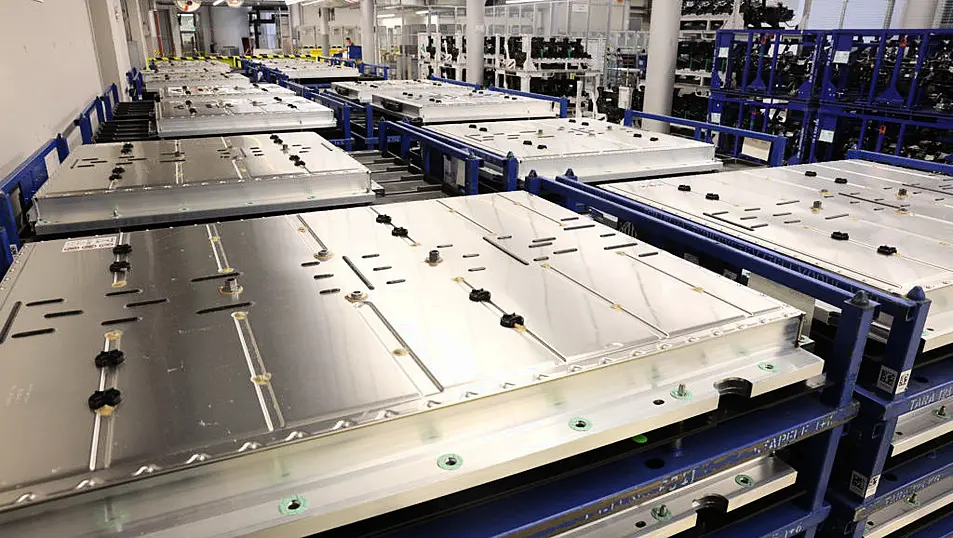
In the next few years though, batteries are going to change again and if the new tech works right, then these new designs will make electric driving so much easier for all of us.
For a start, batteries are going to become cheaper. It’s reckoned that if you can design batteries that don’t use expensive stuff like cobalt and nickel, you can knock around 65 per cent off the cost of making them. Cheaper batteries will mean cheaper cars, and cheaper cars with bigger batteries giving us all a longer range on one charge.
How about a really, really long range?
Chinese battery-making giant CATL has just announced a new design of battery that can hold around twice as much power for a given weight.
In fact, these new batteries are so efficient that CATL is actually designing them for use in future electric aeroplanes, but CATL already supplies batteries to the likes of Ford, BMW, and even Tesla so expect these designs to make it onto the road in due course.
In theory, this design can give you a 100kWh battery, with a range of up go 700km, for a weight of 200kg. For comparison, the 50kWh battery in a current Opel Corsa weighs 500kg but only gives you 350km of range.
Then there are solid-state batteries. These do away with the liquid innards of current lithium-ion batteries and replace it with a solid ceramic material. Why is that important?
Because these solid state designs are far more stable, don’t overheat, and consequently can be charged way, way faster than current battery designs. You could conceivably charge a solid-state battery up in as little time as it takes to fill the fuel tank of a combustion car.
Everyone is working on this technology, but it seems as if both Nissan and Toyota have an early lead on getting them ready for production. Nissan expects to be selling cars with solid-state batteries by 2028.
2. Nurse, the screens!
We’ve got used to having massive screens in our cars — distracting and frequently annoying though they are — but while there have been some gimmicky updates recently (such as the screens used by Chinese car maker BYD, which rotate from a horizontal ‘landscape’ layout to an upright ‘portrait’ style layout at the touch of a button) there are bigger changes coming soon.
The first big change will be the phasing out of mobile phone connectivity. Up till now, there has been much focus on getting your phone to connect seamlessly to your car, with systems such as Apple CarPlay and Android Auto essentially replicating your phone’s screen on the car’s.
That may be changing though — General Motors has said that it wants to create an on-screen experience which will be faster, slicker, and smoother to use than CarPlay, and bring users away from their phone’s software and back to the stuff supplied by the car makers.
Why is that important? Because then you can be sold stuff — car makers are already selling over-the-air upgrades to you, such as downloading sat-nav or even a heated seats button for an extra cost, sometimes a monthly cost.
Mercedes-Benz will even sell you a performance upgrade for its electric EQE and EQS models through the dashboard, once you cough up for a subscription (this tech is currently only in the US market, but don’t think that it won’t come here). Frankly, we’d rather keep the CarPlay, but in spite of consumers — and consumer advocate groups — pushing back against such pay-to-play software in cars, it looks all but inevitable that it will become widespread.

Of course, we might be doing away with screens altogether. BMW recently showed a concept car, called the iVision Dee, which is a hint at what the new, all-electric, 3 Series will be like come 2025.
Inside, there’s no big screen on the dashboard, but instead a full-width heads-up display projected onto the windscreen. For now, this ‘Panoramic Vision’ is a slim strip at the base of the windscreen, but eventually it could become full-size, projecting useful information across the entire width and height of the screen.
3. We, Robot
Robots are coming to cars in a big way. Indeed, cars will kinda become robots themselves, at least if you believe the hype. So-called ‘self-driving’ technology already exists, at least in the laboratory and on prototypes, but it’s still quite a long way away from becoming a daily reality.
While the likes of Google has robotic, driverless cars racking up test miles in the US, they tend to do their testing in states with lots of dry, clear weather and straight roads with 90-degree junctions. None of those cars could, today, reliably pick you up in Killarney and drive you to Letterkenny, but some of the tech from them will come to regular car sooner than you think.
Connected cars are already a thing, and the capability of cars to electronically talk to other cars, and to the wider environment around them, is growing every day.
The vast Stellantis group — which includes Peugeot — has said that its cars will become ever more sophisticated because it will be able to essentially farm-out the computing power needed to run complex systems to the cloud, a system called the STLA Brain. Your next Peugeot may not be a super-computer on wheels, but it will be able to connect to a super-computer when it needs to…

At a more practical level, BMW is already planning on having its ‘Neue Klasse’ electric cars (the first of which will be that electric 3 Series in 2025) being able to park themselves. Not with you in them. In fact, the plan is for the Neue Klasse cars to be able to drop you off at the entrance to a multi-storey car park and then wander inside and find a space by themselves.
It’s part of a whole raft of technological upgrades that the Neue Klasse will bring with it, including a total re-invention of BMW’s long-standing ‘iDrive’ infotainment system which is already starting to filter through to current BMW models with the new curved digital dashboard display.
“Today, BMW iDrive is more than just a control and operating system – it’s a digital world of experience allowing human and car to interact with one another and exchange information," said a BMW spokesperson.
"With the new operating system and curved display this translates into a broader offering of digital content for information and entertainment, shorter function update cycles, better information on charging points for electric vehicles and improved access to a host of specific online services.
"We are continuously enhancing the associated user experience based on the latest available technology."
This is without even mentioning that BMW is also working on e-ink tech for car bodies that will allow you to change the car’s colour according to your mood. You can even add racing stripes if you like…
It’s not just the cars that will become robotic, there may be robot helpers too. Hyundai has created a robot that’s designed to plug your electric car into a charging point.
Now, you might be thinking that you’re perfectly capable of doing that yourself, thanks very much, but you’re not all people — Hyundai reckons that this robotic arm will be a boon to those with mobility impairments. Imagine for example how hard it is to plug in an electric car if you’re a wheelchair user?
Equally, as charging systems become faster and more powerful, the cables necessarily get thicker and heavier, meaning that eventually some people may simply not be able to lift them up at all. The robot arm — can take care of that for you.
4. Bye-bye steering wheel
The traditional round steering wheel has been under attack for some time, with various car makings squaring off sections of the wheel so as to allow for better legroom, or more usually just to make a style statement.
Peugeot is one of the biggest advocates of a non-round steering wheel, with its current small hexagonal wheel, part of the ‘i-Cockpit’ design, that sits almost in your lap. That’s only the start though. Peugeot has already shown where the steering wheel is going, and it’s not a wheel anymore.
The Hypersquare control system, as it’s called, is an oblong controller, with four round inside-out wheels built into each corner.
The idea is that it takes up less space, can be retracted into the dash if the car is in self-driving autonomous mode, but because of the little internal wheels, you can still spin it and turn it like a conventional wheel without crossing your arms over.
Sounds too sci-fi? Nope — Peugeot says it will be in production before the end of the decade.
